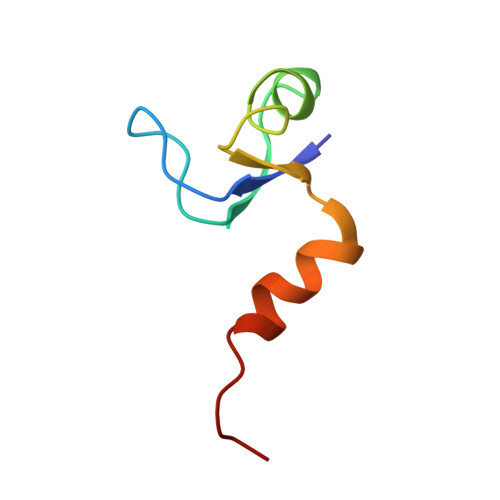Effects of varying the local propensity to form secondary structure on the stability and folding kinetics of a rapid folding mixed alpha/beta protein: characterization of a truncation mutant of the N-terminal domain of the ribosomal protein L9.
Luisi, D.L., Kuhlman, B., Sideras, K., Evans, P.A., Raleigh, D.P.(1999) J Mol Biology 289: 167-174
- PubMed: 10339414
- DOI: https://doi.org/10.1006/jmbi.1999.2742
- Primary Citation of Related Structures:
1CQU - PubMed Abstract:
The N-terminal domain of the ribosomal protein L9 forms a split betaalphabeta structure with a long C-terminal helix. The folding transitions of a 56 residue version of this protein have previously been characterized, here we report the results of a study of a truncation mutant corresponding to residues 1-51. The 51 residue protein adopts the same fold as the 56 residue protein as judged by CD and two-dimensional NMR, but it is less stable as judged by chemical and thermal denaturation experiments. Studies with synthetic peptides demonstrate that the C-terminal helix of the 51 residue version has very little propensity to fold in isolation in contrast to the C-terminal helix of the 56 residue variant. The folding rates of the two proteins, as measured by stopped-flow fluorescence, are essentially identical, indicating that formation of local structure in the C-terminal helix is not involved in the rate-limiting step of folding.
Organizational Affiliation:
Department of Chemistry, State University of New York at Stony Brook, Stony Brook, NY 11794-3400, USA.
















